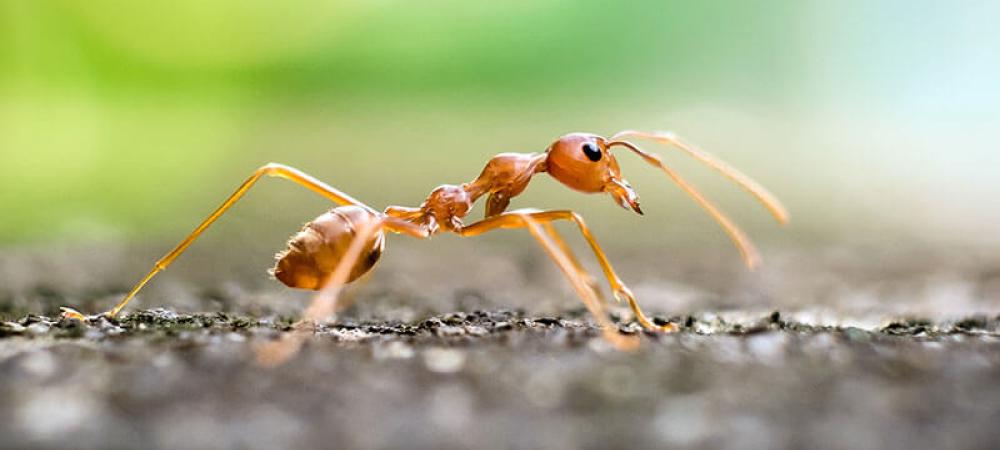How to Get Rid of Fire Ants in Your Tampa Bay Yard

Fire ants are one of the most frustrating pests for homeowners in Tampa Bay. From painful stings to unsightly mounds, these invasive pests can quickly turn your beautiful lawn into a battle zone. The good news? You can control fire ants effectively—without damaging your yard, harming pets, or wasting money on ineffective methods.
This guide uses expert advice from the University of Florida’s IFAS Extension to give you step-by-step, local-friendly solutions.
Why Fire Ants Are Such a Problem in Tampa Bay
- Year-Round Warmth: Tampa Bay’s subtropical climate means fire ants are active most of the year—especially spring through fall.
- Heavy Rain: Summer rains often trigger new mound building as colonies move to higher ground.
- Invasive Species: Tampa Bay mostly deals with red imported fire ants (Solenopsis invicta), known for aggressive behavior and painful stings.
According to UF/IFAS, fire ants can impact local wildlife, damage young plants, and pose risks to children and pets.
Step 1: Identify the Fire Ant Problem in Your Yard
Before treatment, confirm that you are dealing with fire ants:
- Look for large, dome-shaped mounds, especially after rain.
- Disturb the mound (with a stick or foot): if small reddish-brown ants swarm aggressively, they’re likely fire ants.
- Avoid relying on mound size—even small mounds can house large colonies underground.
Pro Tip: You don’t need to treat every ant you see—focus on fire ant colonies.
Step 2: The Two-Step Method — Your Best Bet for Long-Term Control
The University of Florida recommends a highly effective, low-risk approach called the Two-Step Method. This strategy targets both visible mounds and hidden colonies.
Step 2A: Broadcast Bait Over the Entire Yard
This is your first, most important line of defense.
Why broadcast bait?
- It targets hidden and new colonies you can’t see.
- Baits use delayed-action insecticides, so ants bring the product back to the queen, eliminating the colony from the inside out.
Best types of baits for Tampa Bay homeowners:
- Hydramethylnon (e.g., Amdro): Slow-acting, effective, ideal for homeowners.
- Spinosad (e.g., Captain Jack’s Deadbug Bait): Organic-approved, safe around pets after application.
- Indoxacarb (e.g., Advion): Fast colony kill, used by professionals.
- Methoprene or S-methoprene (e.g., Extinguish): Growth regulators—slower, but safer for sensitive areas.
How to apply:
- Use a handheld spreader or lightly toss with a gloved hand.
- Apply when ants are active—mid to late afternoon during cooler days (below 85°F).
- Avoid rain for 24-48 hours after application.
Pro Tip: You only need about 1-1.5 pounds of bait per acre, so a little goes a long way.
Step 2B: Spot-Treat Visible Mounds
After giving the bait 7-10 days to work, go back and deal with any mounds that remain active.
Best mound treatments:
- Boiling Water (organic option): 3 gallons per mound can kill up to 60% of colonies, but be careful around plants and grass.
- Drenching Liquids: Products with bifenthrin or permethrin provide quick knockdown.
- Mound Baits: Sprinkle directly on the mound for slow elimination without disturbing soil.
Avoid: Gasoline, diesel, or “home remedies” like grits—these don’t work and can cause environmental harm.
Step 3: When and How Often to Treat Fire Ants in Tampa Bay
Timing matters more than you might think.
Ideal treatment seasons:
- Spring (March-May): Reduces colonies before summer explosions.
- Fall (September-October): Controls populations heading into winter dormancy.
Reapplication frequency:
- Every 4-6 months or when you start seeing new activity.
Pro Tip: Mounds often spike after heavy rain—monitor your yard accordingly.
Step 4: Ongoing Prevention Strategies
Once you get control, your goal should be preventing reinfestation:
- Maintain a Clean Yard: Keep grass cut, eliminate piles of leaves or debris.
- Inspect Landscaping Materials: Fire ants often hitchhike in sod, mulch, or potted plants.
- Disrupt Nesting: Frequent mowing, edging, and turning over garden beds discourages colonies.
- Create Barriers: Use diatomaceous earth or spinosad granules in high-traffic zones, like patios and play areas.
Step 5: What to Do if Fire Ants Just Keep Coming Back
Sometimes, especially in HOA communities or near natural preserves, you may need professional help.
When to call the pros:
- Property larger than half an acre
- Multiple re-infestations after DIY treatment
- Ants nesting in electrical equipment, like A/C units
Look for services that:
- Use Integrated Pest Management (IPM) techniques
- Offer biannual baiting programs
- Provide guaranteed mound retreatment
To learn more about local treatment options, contact our local experts at Assuregreen Property Services today!
Common Mistakes Tampa Bay Homeowners Should Avoid
- Applying bait on wet ground: Bait spoils quickly and ants won’t pick it up.
- Treating mounds with bait after disturbing them: Once disturbed, ants won’t forage for hours or days.
- Using contact insecticides first: You’ll kill workers without harming the queen—mound will bounce back.
Final Word: Be Proactive, Not Reactive
In Tampa Bay, fire ants aren’t a one-and-done problem—they’re a maintenance issue. With the right approach using UF/IFAS-proven methods, you can enjoy your lawn, protect your family, and avoid wasting time on ineffective gimmicks.
